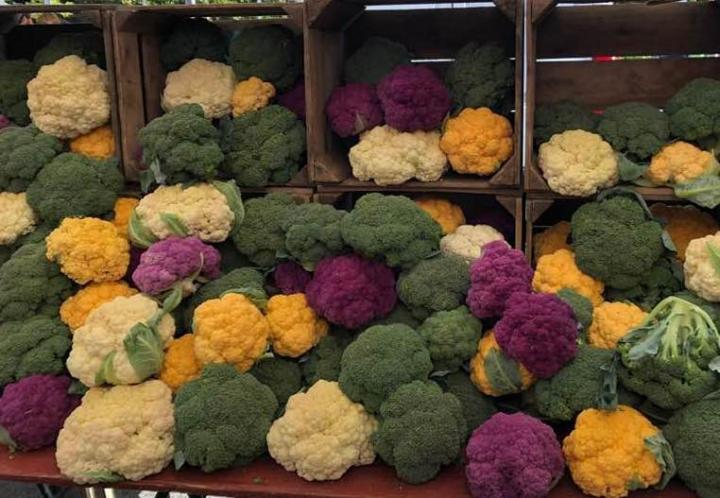
Also receive the Almanac Daily newsletter including gardening tips, weather, astronomical events, and more.
Planting, Growing, and Harvesting Cauliflower
ADVERTISEMENT
How tall will Brussel sprouts grow to?
David- Brussel Sprouts typically grow to 2 to 3 feet, depending on the variety.
Check out our Brussel Sprouts Growing Guide to learn more.
Last year and this year we tried to grow cauliflower from seed. We had nice seedlings and planted them. Last year 2 out of the 4 grew nicely, but only one produced a beautiful head.
This year we planted 4 seedling and all four plants look beautiful but only one is producing a flower. It’s about 4 inches now but the other three have lots of gorgeous leaves but no flower. We have them planted in a bed with Brussels sprouts spaced appropriately. What would cause these beautiful plants to not produce a flower?
We are growing cauliflower for the first time and each of our plants has one nice head of cauli but they are yellow, not white. We didn't know about blanching until today and the heads are already about 5 to 6 inches in diameter:(
We have pulled the leaves up around it and secured them with twine as of today. Is the yellow colour normal and simply an indication of the need to blanch? Or is the cauliflower gone bad or too mature? Can we still eat it? Thanks so much for your helpful reply!!!
How can I see couliflour is ready to cook it?
Wealth of information here and I will be covering them with the leaves of the plant. I planted 12 starts on April 5th and they are just starting to form a head.
Hi.
I just grew my first patch of 8 heads of organic cauliflower. They came out great and all I did was water daily and feed once a month. Big beautiful snowwhite heads about 4 pounds each. And they are delicious! Almost better raw than cooked.
I know they only produce a single flower, but after harvesting them, I cut and sauteed some of the leaves......and they were delicious, too!! Kinda like a mix of chard and kale. They were still firm and not mushy like sauteed spinach. I will try some of the stalks, too.
Just thought I'd share that if you grow it, then you can eat everything. 0 waste.
I didn't pull up my plants after harvest this year so I could feed the foliage to my chickens. I was so surprised when the plan started to grow again and now has beautiful heads of cauliflower ready to harvest. My brussel sprouts are doing the same thing. Is this a practice I can continue? Will the plants continue to produce like this each year?
Cauliflower is an annual so that confuses us! However, Brussel sprouts are a biennial, which means their natural grow cycle is two years along! So if you live in an area where it doesn’t get too cold, they’ll keep producing. After their second year’s fall harvest, they will flower and set seed. At that point, you could harvest the seed for future plantings!
Can a cauliflower (and Brussels Sprouts) be grown in a 5-gallon bucket? Do they have deep roots?


 Cauliflower at a farm stand in Washington, D.C., 2019. Credit: Wendy Hagen.
Cauliflower at a farm stand in Washington, D.C., 2019. Credit: Wendy Hagen.






